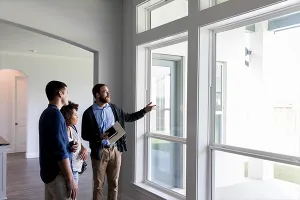
Office buildings that are outdated or that have been left partially or completely empty since the pandemic began are being reimagined. With a surge in demand for apartments, developers are remaking some underused office buildings into new living corridors.
For example, a two-tower office building known as Park Center in Alexandria, Va., a suburb of Washington, D.C., was about one-third empty. The property—now called the Park and Ford Apartments--has been transformed into luxury apartment buildings of 435 units.
The former office complex is one of 151 office buildings, hotels, or other commercial properties converted to apartments last year, according to Yardi Matrix data.
Many of the office conversions have been of newer buildings than older ones. Overall, developers are viewing nearly 1,000 office buildings as candidates for residential conversion, The Wall Street Journal reports. These are mostly properties that have been built since 1980, span more than 100,000 square feet, and are at least 50% vacant, according to the CoStar Group.
To make the former office buildings more livable, developers are adding outdoor gathering spots, operable windows, balconies, gyms, and even co-working office spaces.
But developers say these conversions aren’t easy to do and that could limit some projects. For example, at the Park and Ford buildings, resolving the presence of mold, asbestos, and damaged concrete delayed construction and added to costs, The Wall Street Journal reports. Also, both zoning regulations and unconventional layouts can prevent some buildings from being turned into apartments.
“At a certain point, if the cost of altering a building starts approaching new construction, it really may not make any sense,” Valerie Campbell, land use attorney at the Kramer Levin firm in New York who has worked on conversions, told The Wall Street Journal.








